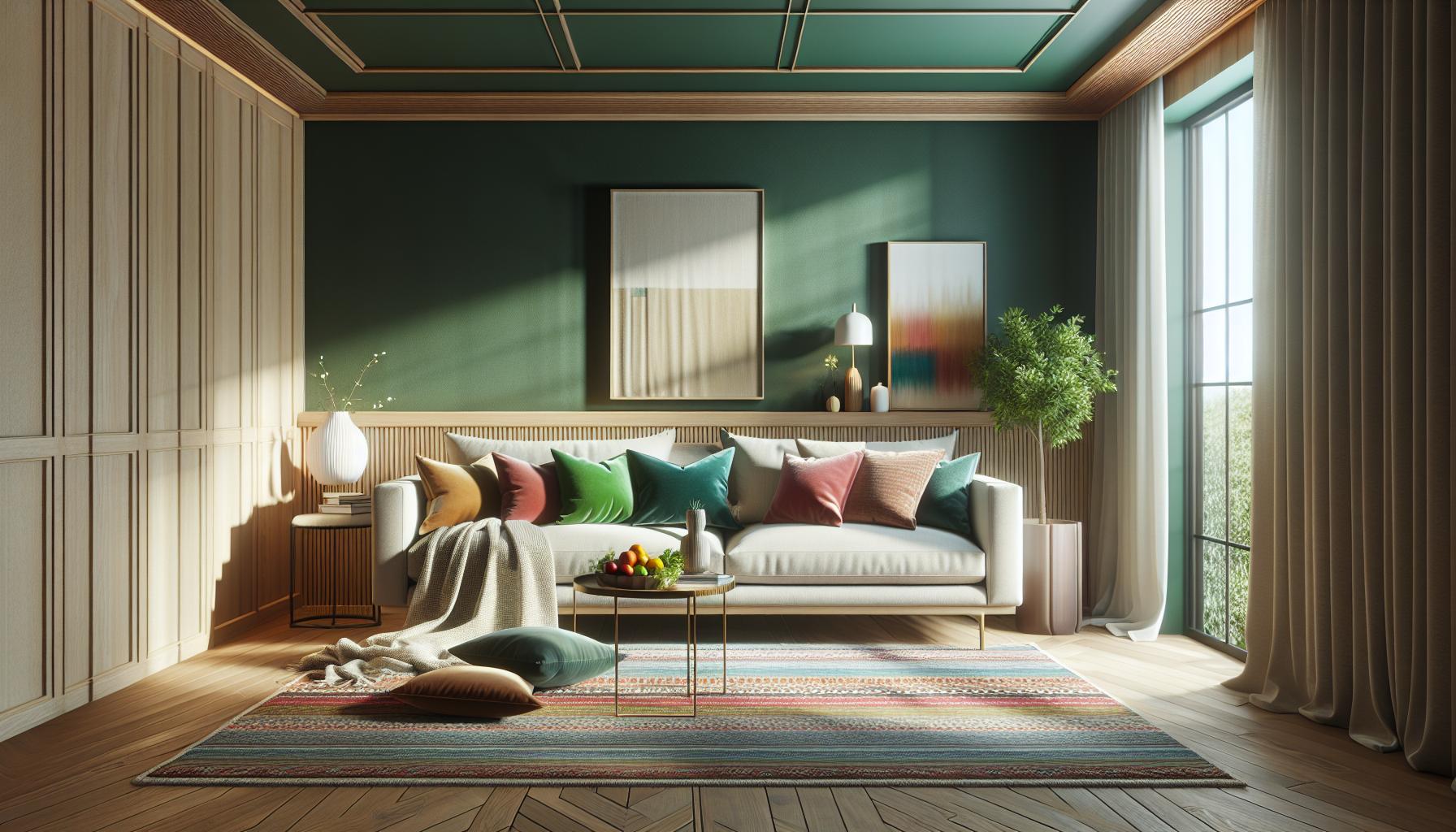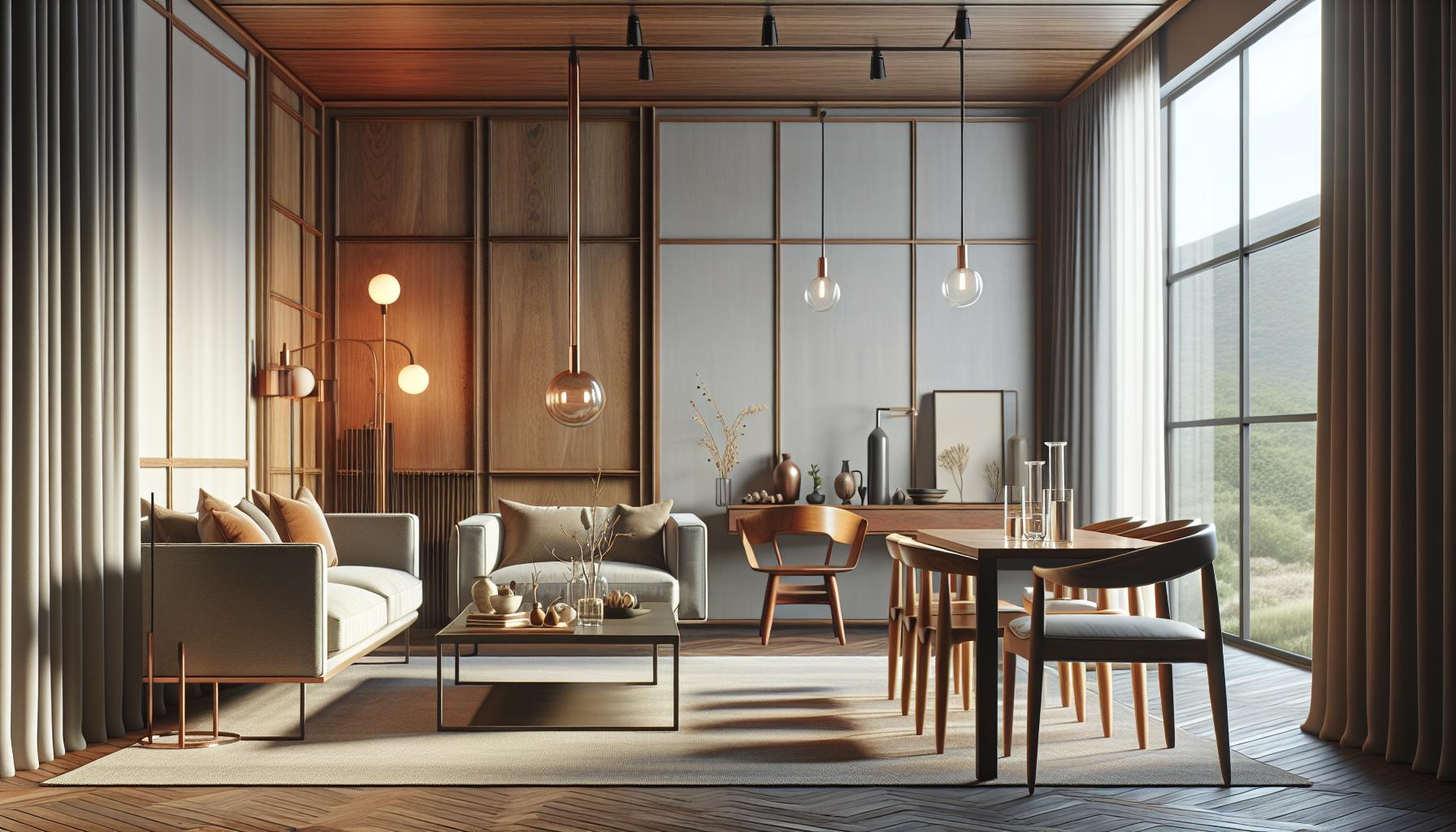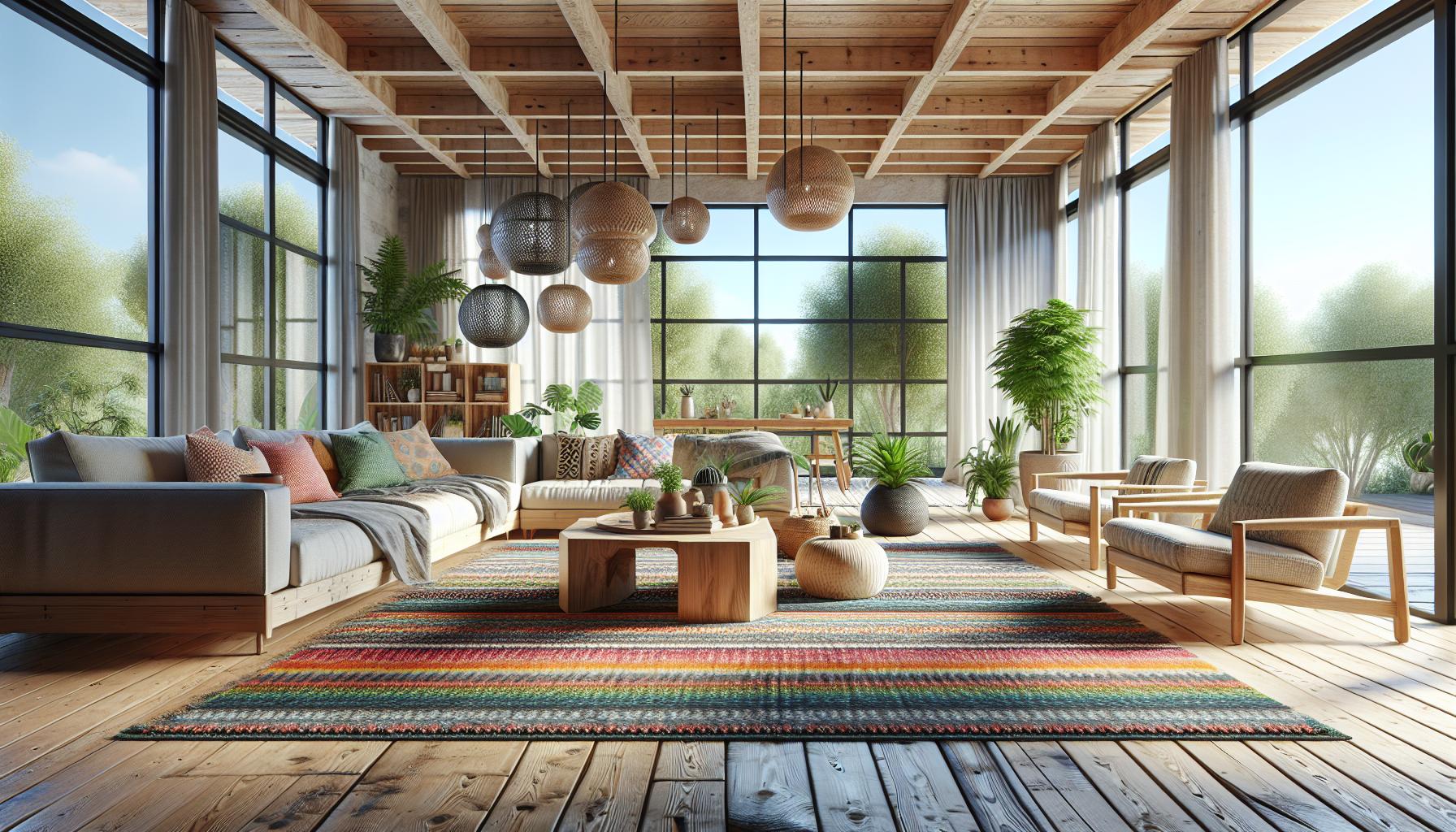Key Takeaways
- Personalized Design: Current interior design trends emphasize the importance of personalization, enabling homeowners to express their unique styles through decor choices.
- Bold Color Palettes: A shift towards rich hues like emerald green and deep navy is prominent, moving away from neutral tones to add vibrancy and character to spaces.
- Sustainability Matters: Eco-friendly materials, such as bamboo and reclaimed wood, are increasingly favored, reflecting homeowners’ commitment to environmental responsibility.
- Smart Technology Integration: The incorporation of smart home technology enhances functionality and convenience, streamlining daily tasks and improving living environments.
- Minimalism and Adaptability: Minimalist designs prioritize simplicity and flexibility, encouraging clutter-free spaces that promote serenity and efficient use of furniture.
- Biophilic Elements: Incorporating natural light and indoor plants fosters a connection to nature, boosting well-being and creativity in home interiors.
In today’s fast-paced world, home interior design trends are constantly evolving, reflecting the changing tastes and lifestyles of homeowners. As people seek comfort and style, they increasingly turn to innovative design ideas that transform their living spaces into personal sanctuaries. From bold color palettes to sustainable materials, these trends offer an exciting glimpse into what’s shaping the interiors of homes across the globe.
Staying ahead of these trends not only enhances the aesthetic appeal of a home but also creates an environment that fosters well-being and creativity. Whether it’s embracing minimalism or incorporating smart technology, understanding the latest design movements can empower homeowners to make informed choices. Dive into the world of home interior design trends and discover how to elevate your space with fresh ideas that resonate with modern living.
Home Interior Design Trends
Current home interior design trends focus on creating spaces that blend functionality with aesthetic appeal. Homeowners prioritize personalization, embracing innovations that reflect their unique preferences. Sustainable materials, such as bamboo and recycled products, play a significant role in contemporary designs, promoting eco-friendly living.
Bold color palettes dominate many homes, moving away from neutral tones to rich hues like emerald green and deep navy. Accent walls and statement furniture pieces add character and vibrancy to living environments. Minimalism remains influential, as clutter-free spaces enhance serenity and clarity. Adaptable furniture solutions, like modular sofas and foldable tables, cater to diverse needs.
Smart technology integration transforms how homeowners interact with their spaces, incorporating features like automated lighting and smart thermostats. Biophilic design elements, including indoor plants and natural light, reinforce a connection to nature, boosting well-being and creativity.
Embracing these trends allows homeowners to create inviting and functional spaces that mirror their lifestyles while enhancing overall comfort and style.
Popular Color Palettes

Popular color palettes in home interior design reflect current aesthetics and homeowner preferences. They blend harmony, individuality, and the latest trends to create compelling living spaces.
Neutral Tones
Neutral tones dominate many designs, providing a versatile and calming backdrop. Shades like beige, taupe, and soft gray work well with various decor styles, ensuring adaptability across different spaces. These colors enhance natural light, creating an open, airy atmosphere. They pair seamlessly with textured fabrics and wooden finishes for an organic feel. Homeowners often use accent pieces, like cushions or artwork, to inject personality into neutral palettes without overwhelming the senses.
Bold Accents
Bold accent colors are on the rise, drawing attention in various spaces. Hues such as emerald green, deep navy, and vibrant terracotta shape contemporary interiors. Designers often use these rich colors on statement walls or standout furniture pieces, adding focal points that invite engagement. Incorporating bold elements in small doses can refresh a room’s aesthetic while maintaining an overall balance. Accessories like lamps, rugs, or art pieces in striking colors enhance visual interest, allowing homeowners to express their unique style effectively.
Furniture Styles

Furniture styles play a crucial role in defining a home’s interior design, providing both aesthetic appeal and functional value. Current trends encompass a variety of influences that enhance living spaces.
Minimalist Designs
Minimalist designs emphasize simplicity and elegance. Clean lines characterize furniture pieces, focusing on practicality without unnecessary embellishments. Functionality takes precedence, allowing items to serve multiple purposes. Natural materials, like wood and metal, create a serene atmosphere while ensuring durability. Key minimalist features include low-profile sofas, sleek dining tables, and unobtrusive storage solutions that maintain an uncluttered environment.
Vintage Influences
Vintage influences offer warmth and character to modern interiors. Retro furniture often incorporates bold prints and unique textures, creating focal points in spaces. Antique or reclaimed pieces add history and nostalgia, enhancing the home’s narrative. Key elements of vintage design include mid-century modern chairs, distressed wood tables, and colorful accent items that evoke a sense of timelessness. Blending these with contemporary elements creates a harmonious balance between old and new, inviting a layered aesthetic into the home.
Sustainable Materials

Sustainable materials play a crucial role in modern home interior design, reflecting a commitment to environmental responsibility while enhancing aesthetic appeal. Homeowners increasingly prioritize eco-friendly options and recycled products in their decor choices.
Eco-Friendly Options
Eco-friendly materials, such as bamboo, cork, and reclaimed wood, are popular choices. Bamboo grows rapidly and requires minimal resources, making it an excellent flooring and furniture material. Cork, harvested from the bark of cork oak trees, is renewable and offers sound insulation. Reclaimed wood adds character while reducing the demand for new lumber. These options not only decrease environmental impact but also integrate seamlessly into diverse design styles.
Recycled Products
Recycled products serve as a vital component in sustainable home interiors. Items made from post-consumer waste, such as glass, plastic, and metal, find new life in furniture and decor. For example, recycled glass countertops provide durability and stunning visuals, while recycled plastic rugs offer vibrant colors and easy maintenance. Incorporating these products helps divert waste from landfills and promotes a circular economy, aligning with the values of eco-conscious homeowners.
Technology in Home Design
Technology plays a vital role in shaping contemporary home interior design, enhancing both functionality and style. Homeowners embrace innovations that streamline daily activities and elevate their living environments.
Smart Home Integration
Smart home integration allows homeowners to control various aspects of their living space efficiently. Automated systems govern lighting, temperature, security, and appliances using smartphones or voice commands. For instance, smart thermostats adapt to occupants’ habits, optimizing energy use while maintaining comfort. Smart lighting systems enable customizable ambiance through adjustable brightness and color temperatures, fostering desired moods within rooms. Furthermore, security cameras and smart locks provide peace of mind through remote monitoring, ensuring that homes remain safe. This technology facilitates a seamless lifestyle where convenience and efficiency take center stage, ultimately reshaping the way individuals experience their homes.
Innovative Lighting Solutions
Innovative lighting solutions contribute significantly to home design, serving both aesthetic and practical purposes. Homeowners increasingly choose LED fixtures for their energy efficiency and longevity. These lights come in various styles, allowing for diverse design possibilities. Additionally, smart lighting technology permits homeowners to adjust their lighting settings based on specific activities or moods, such as hosting gatherings or enjoying quiet evenings. Pendant lights and chandeliers, with unique designs, serve as focal points in dining areas or living rooms, infusing personality into the space. Integrating natural light into design through large windows and open spaces enhances well-being while reducing reliance on artificial light. This strategic approach ensures that lighting elevates both the functionality and ambiance of modern interiors.
Evolving Lifestyles And Preferences
Home interior design trends are a reflection of evolving lifestyles and preferences. By embracing bold colors and sustainable materials homeowners can create spaces that are both stylish and functional. The emphasis on personalization and eco-friendliness not only enhances aesthetics but also fosters a deeper connection to the environment.
As technology continues to advance it plays a crucial role in shaping modern interiors. Smart home features and innovative lighting solutions enhance comfort and convenience while promoting energy efficiency. Ultimately these trends empower homeowners to transform their living spaces into unique sanctuaries that resonate with their individual styles and values.